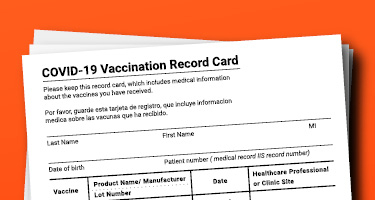For more information about your rights as an employee under the Family First Coronavirus Response Act (“FFCRA”), click here; for FFCRA Q & A, click here, and for concerns about returning to work during this pandemic, click here.
What penalties do employers face for violating the FFCRA? What damages are available to employees whose rights have been violated? Our Ohio Employment Attorneys explain the remedies available to employees when their employer has violated the FFCRA.
Violations of the Emergency Paid Sick Leave Act:
Under the FFCRA, subject to some exceptions, employers with 500 or fewer employees are required to make 80 hours of paid sick leave available for full-time employees. For part-time employees, the employers must make available the equivalent of the average number of hours scheduled over two weeks. To be entitled to take this paid sick leave, the employee must meet one of the following six criteria:
- An employee is subject to a federal, state, or local quarantine or isolation order because of COVID-19;
- An employee has been advised by a healthcare professional to self-quarantine due to COVID-19 concerns;
- An employee is experiencing symptoms of COVID-19 and presently seeking a medical diagnosis;
- An employee is caring for an individual who is subject to an order as described in subparagraph (1) or has been advised as described in paragraph (2);
- The employee is caring for their son or daughter if the school or place of care of the son or daughter has been closed, or the childcare provider of the son or daughter is unavailable, due to COVID-19 related issues or concerns.
- The employee is experiencing any other substantially similar condition specified by the Secretary of Health and Human Services, in consultation with the Secretary of the Treasury and the Secretary of Labor.
This provision of the FFCRA also makes it unlawful for an employer to:
- Require an employee who uses this paid sick time to find a replacement employee to cover his or her hours that he or she is using the paid sick time for.
- Require an employee to use other paid leave provided by the employer to the employee before the employee uses the paid sick time.
- Terminate, discipline, or otherwise retaliation against an employee who has a) used the sick pay offered under the FFCRA, or b) complained about an employer’s failure to abide by the sick pay provisions of the FFCRA [“anti-retaliation provisions”].
An employer who violates the mandatory sick pay provisions or the anti-retaliation provisions of the FFCRA is considered to have violated the Fair Labor Standards Act (“FLSA”). The FLSA is a federal law that governs wage and hour standards for most public and private employers. An employer who has violated the mandatory sick pay provisions will be considered to have failed to pay its employees minimum wages in violation of the FLSA. As a result, the employer will be subject to penalties including: backpay of wages owed; liquidated damages (double damages – an additional amount equal to the wages owed); attorneys’ fees and expenses; pre-judgement and post-judgment interest; and injunctive relief (an order preventing the employer from continuing to engage in the unlawful practice).
Violations of the Emergency Family and Medical Leave Expansion Act:
Under the FFCRA, subject to some exceptions, employers with 500 employees or less are required to provide job-protected leave for employees who are unable to work (or telework) due to a need to care for the employee’s child (under the age of 18) if the child’s elementary or secondary school or place of childcare has been closed, or the childcare provider is unavailable, due to the COVID-19 emergency. This applies to employees who have been employed by the employer for at least 30 calendar days. Under this Expansion Act, the employer may provide the first 10 days of leave unpaid, then future absences beyond the 10-days must be paid at two-thirds the employee’s regular rate of pay for up to 12 weeks total leave.
Following an employee’s return from leave authorized by the Expansion Act, the employee is entitled to be restored into his or her same or a substantially similar position. Exceptions apply for employers with fewer than 25 employees if certain conditions are met.
Employers may not discharge, discipline, or otherwise retaliate against any employee who takes leave under the Expansion Act.
The Department of Labor has stated that employers who violate the EFMLA are subject to the same enforcement provisions as the Family and Medical Leave Act. However, the Department observed a period of “temporary non-enforcement” for the first 30 days after the Act took effect on April 1, 2020, so long as the employer acted reasonably and in good faith to comply with the Expansion Act. Outside of the “temporary non-enforcement” period, an employer who violates the FMLA or the Expansion Act can be liable for: compensatory damages (including back pay, lost benefits, front pay, and emotional distress); liquidated damages (double damages – an additional amount equal to the wages owed); attorneys’ fees and expenses; pre-judgement and post-judgment interest; injunctive relief (an order preventing the employer from continuing to engage in the unlawful practice); and reinstatement.
For more general information about damages available to employees who can establish a legal violation against their employers, click here.
Each situation is different and a thorough review of the facts of your situation is likely necessary to determine the best option for you. If you feel your rights under the FFCRA have been violated, or if you have other questions about COVID-19 and your employment, reach out to your Ohio Employment Lawyer today to schedule a free consultation.
Mansell Law
Ohio Employment Lawyers
































